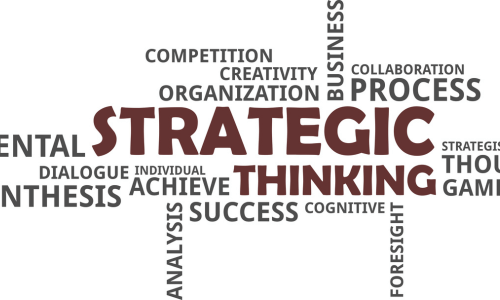
In the dynamic world of business, staying ahead means not just adapting but innovating. Design Thinking has surfaced as a beacon of innovation, offering a structured framework for understanding and solving complex problems in a user-centric way. This article embarks on a comprehensive exploration of Design Thinking—its essence, its process, its principles, and its profound impact on driving business innovation. By dissecting its multifaceted approach and studying real-world success stories, we uncover the transformative power of Design Thinking in reshaping businesses and industries.
Understanding Design Thinking
What is Design Thinking?
Design Thinking is a holistic problem-solving methodology that balances analytical thinking and intuitive thinking, encouraging organizations to focus on the people they’re creating for, leading to better products, services, and internal processes. When you sit down to create a solution for a business need, the first question should always be what’s the human need behind it?
Principles of Design Thinking
- User-Centricity: It all starts and ends with the user. The primary aim is to develop useful products and solutions that fit the needs and desires of the user, not the other way around.
- Collaboration: Cross-functional teams bring together diverse perspectives. This diversity sparks more creative solutions and helps avoid the tunnel vision that teams with similar backgrounds tend to have.
- Experimentation: It’s about being fast and iterative. Rapid prototyping and continuous testing provide immediate feedback to refine and improve the solution.
- Iterative Approach: Design Thinking thrives on feedback and iterations. Solutions are never final; they evolve through continuous improvement and user interaction.
- Visual Thinking: Leveraging visual elements helps in simplifying complex problems, facilitating better communication and understanding among team members.
The Design Thinking Process: A Deeper Dive

1. Empathize: This stage is foundational and informs the entire process. Teams engage with users, listening to their stories, observing their behaviours, and gaining deep insights into their emotional needs.
2. Define: Armed with empathy, teams distil observations into a clear, actionable problem statement. This stage frames the challenge and focuses on the human element, ensuring the solution is grounded in real user needs.
3. Ideate: Here, creativity takes centre stage. Teams brainstorm a range of ideas, no matter how outlandish, fostering an environment where quantity supersedes quality and all voices are heard.
4. Prototype: Ideas take a tangible form. Prototypes can range from paper sketches to interactive simulations. This stage is about learning by doing, bringing clarity and insight to the proposed solutions.
5. Test: Testing is not merely a phase but a mindset. Prototypes are exposed to real users, feedback is gathered, and designs are refined. It’s about embracing feedback, learning from interaction, and making iterative changes to better align with user needs.
Real-World Applications of Design Thinking
How Design Thinking Transforms Businesses
- IBM: IBM’s adoption of Design Thinking revolutionized its approach to software development, fostering a culture of user-centricity and driving substantial business outcomes.
- PepsiCo: By embracing Design Thinking, PepsiCo reimagined its brand and product portfolio, resulting in innovative product lines and packaging designs that resonated deeply with consumers.
- GE Healthcare: GE Healthcare’s use of Design Thinking led to the development of an innovative MRI machine that not only delivered excellent technical performance but also provided a significantly better experience for young patients.
The Strategic Impact of Design Thinking

1. Enhancing Customer Experience: Design Thinking places the customer’s experience at the heart of the product development process, leading to solutions that are not just functional but also delightful and intuitive.
2. Fostering a Culture of Innovation: By democratizing creativity, Design Thinking breaks down silos and encourages a culture where innovation is everyone’s business.
3. Driving Business Growth: Companies that embrace Design Thinking often see improvements not just in user satisfaction but also in their bottom line. It fosters a mindset that helps businesses anticipate changes, adapt, and create future-ready solutions.
Conclusion
Design Thinking is not just a process; it’s a mindset that empowers individuals and organizations to think differently, act creatively, and innovate continuously. It’s about understanding that at the heart of every successful business is a deep understanding of the human experience. As seen through companies like Apple, Airbnb, IBM, and PepsiCo, Design Thinking can lead to revolutionary innovations and redefine industries. It’s a journey of exploration, learning, and growth, where the ultimate destination is creating solutions that truly resonate with users.
We’ve unpacked a lot today at Biz Step Ladder, and now it’s your turn to add to the dialogue. Do you have insights or experiences that could expand on what we’ve discussed? Perhaps you’ve identified an angle we haven’t covered. Jump into the conversation below with your comments and let’s continue the learning journey together. Your input is not just welcome—it’s a vital part of our community’s growth. So, what are your thoughts? Share them below and let’s enrich our business wisdom collectively!
Discover related content by exploring The Power of Creative Solutions in Business: Driving Growth.





